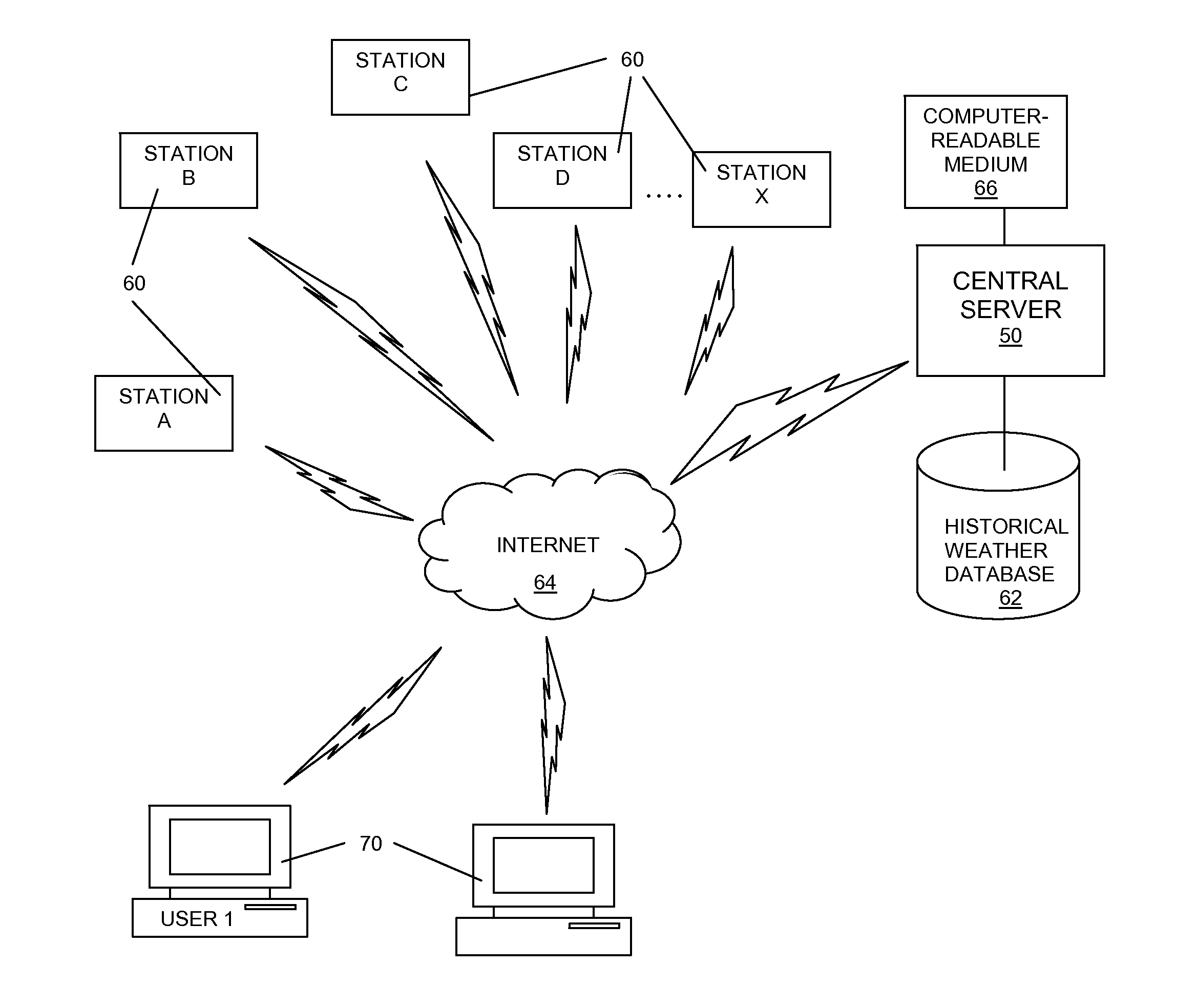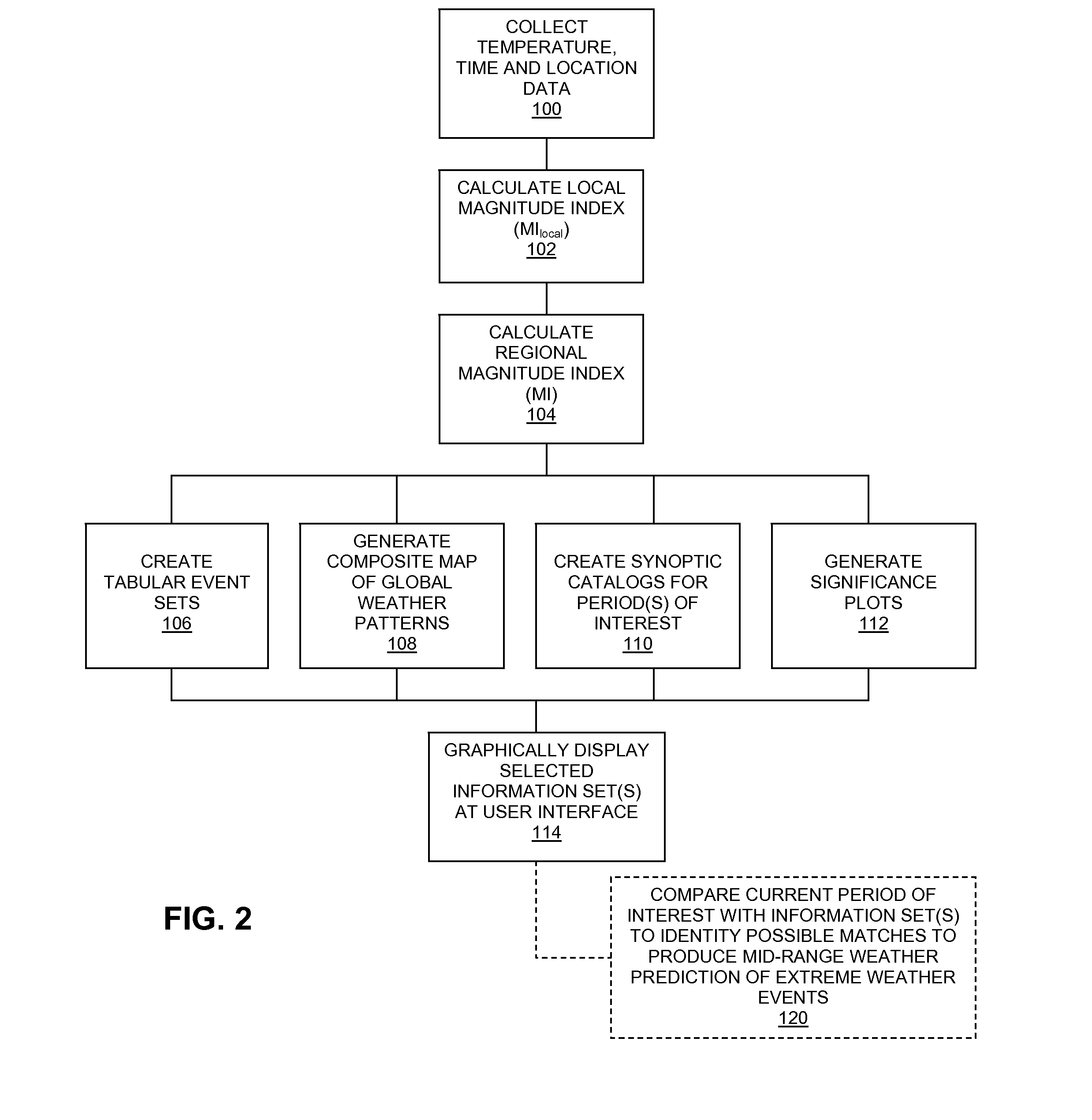System and Method for Identifying Patterns in and/or Predicting Extreme Climate Events
a technology for predicting extreme climate events and identifying patterns, applied in the field of methods and systems for predicting extreme weather, can solve the problems of extreme uncertainty, extreme discomfort for individuals, and inability to find a store with air conditioners or fans left in stock, so as to improve lead time and skill.
- Summary
- Abstract
- Description
- Claims
- Application Information
AI Technical Summary
Benefits of technology
Problems solved by technology
Method used
Image
Examples
example 1
Severe Cold Event
[0090]In an exemplary study, wintertime cold snaps over a large region of the Northeastern and Midwestern United States were considered according to how local cold temperature thresholds (5th percentiles of local wintertime temperature recorded at each of almost 500 stations) are exceeded on daily timescales. A regional magnitude index reflecting the temperature intensity, duration and spatial extent of extreme cold spells is computed for 61 winters from 1948-49 to 2008-09 and for each day of each event. Observed variability of regional cold spells was then examined on timescales ranging from daily to interdecadal and evaluated with respect to the climatic controls on their synoptic causes. Relationships with known climate modes (ENSO, NAO, PDO, PSV, etc.) as well as other relevant objectively derived circulation and land-surface patterns may then be used to develop sophisticated models and simple rule-of-thumb techniques for seasonal and improved medium-range proba...
example 2
Extreme Cold Winter of 2009-10
[0098]The winter of 2009-2010 made headlines for its fierce snowstorms and brutally cold temperatures. According to the UK Meteorological Office, England and Wales suffered their coldest winter since 1978-79, and Scotland saw temperatures not seen since the 1960's. Miami Beach, Fla., recorded its coldest January-February since records began in 1937, and Baltimore, Md., Washington, D.C., Wilmington, Del., and Philadelphia, Pa., all set seasonal snowfall records. An examination of Northern Hemisphere cold and warm temperature extremes using the inventive method reveals that while the cold events and their disruptive impacts received the bulk of the attention, warm extremes actually dominated much of the Northern Hemisphere when viewed in a historical context.
[0099]To identify extreme temperature events, local and regional extreme cold and warm temperature indices were calculated using 995 mb temperature data from NCEP Reanalysis. A local “Severe Cold Inde...
PUM
 Login to View More
Login to View More Abstract
Description
Claims
Application Information
 Login to View More
Login to View More - R&D
- Intellectual Property
- Life Sciences
- Materials
- Tech Scout
- Unparalleled Data Quality
- Higher Quality Content
- 60% Fewer Hallucinations
Browse by: Latest US Patents, China's latest patents, Technical Efficacy Thesaurus, Application Domain, Technology Topic, Popular Technical Reports.
© 2025 PatSnap. All rights reserved.Legal|Privacy policy|Modern Slavery Act Transparency Statement|Sitemap|About US| Contact US: help@patsnap.com



